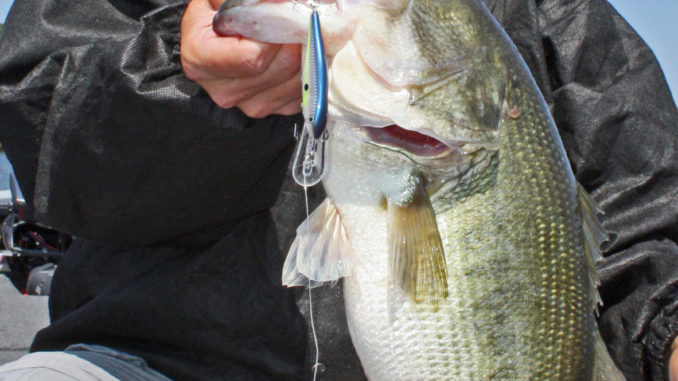
Largemouths have already made first move toward shallow water
March brings the promise of spring fishing, and although there are cold spells to be weathered, bass fishermen can miss some great fishing if they wait too long on Lake Wateree largemouth.
Chris Heinning guides on Lake Wateree, and he said that early March is a great time to be on the lake, especially for big largemouth.
“The fish are in their annual migration toward the shallows, but the majority of spawning doesn’t occur until April,” Heinning said. “The pattern now is that the fish are moving into the creeks and coves. They’re holding on points, rocky shorelines that drop into deeper water and shallow humps near the mouths of creeks. A lot of the fish are in the 8- to 12-foot depth range. I use my Lowrance electronics to find that deeper water close to shallow water-type features – preferably with structure such as stumps or other cover – to find big Lake Wateree largemouth during the early season. Docks are super transition holding structures for bass. As we get later into March, the shoreline grass begins to grow and will hold big bass.”
Heinning (803-236-1257) said that using different lures to find the pattern that fits the weather and water conditions is crucial.
“Weather conditions dictate daily movements, and bass are moving toward shallow water and will be moving progressively throughout the month,” he said. “They will back off to slightly deeper water when a front passes, so I have to be versatile and open-minded with my lure choices and presentations. Water clarity is one factor I use, and if the water is dingy to muddy, the fish will usually be in the shallow range and if clear, slightly deeper.
“One very productive pattern is the jig-and-craw combination with the size of the jig determined by the depth and speed you’re fishing,” he said. “Anything from ¾-ounce for deeper water down to ¼-ounce around shallow cover will produce depending on the structure fished. Brown or crawfish color is a good color unless the water is dingy to muddy, and I’ll go to black and blue if the water’s muddy.”
Heinning said crankbaits and spinnerbaits are productive and enable him to cover a lot of territory to locate bass, another essential component to success.
“I’ll use heavier Buckeye spinnerbaits to work the slightly deeper water and bump them along the bottom, with bass often hitting them on the fall,” he said. “A chartreuse-and-white color pattern is productive. Crankbaits that dive into the eight-foot depth are good searching lures and I work them along the points, humps and rocky shorelines that drop into deeper water. I also like vibrating lipless lures such as the Rat-L-Trap worked on edges that drop into deeper water, especially where stumps and woody cover are found.”
Heinning said the upper end of the lake usually warms sooner and often offers more options in terms of water temperature and color diversity.
“Wateree Creek is often very good in March and typically has more dingy or muddy water than most creeks in the lake,” Heinning said. “A shallower bite is often found on the upper part and northern creeks including Taylor, Beaver, Dutchman’s, Singleton, June, Rochelle and Colonel. These areas usually provide a diversity of water color, water temperature and cover for March fishing.”


Be the first to comment